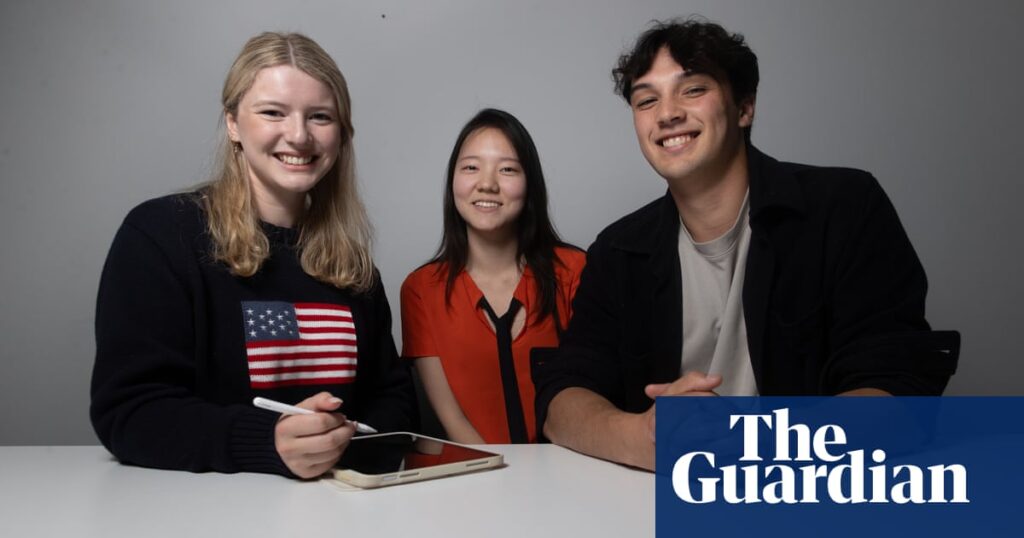Embracing AI in Education: A New Paradigm for Learning
As third-year student Jack Quinlan settled in for our interview, a confident smile crossed his face. He knew what was coming, not because he was endowed with any supernatural ability, but thanks to a trial run he’d done with ChatGPT, a popular generative AI tool.
Quinlan, who is studying software engineering and neuroscience, had asked the chatbot what kinds of questions a “professional journalist at the Guardian” might pose regarding artificial intelligence in universities. The AI delivered a smart array of inquiries, compelling him to think critically about his experiences with this powerful technology.
“You’d be surprised how engaging it can be,” he noted, reflecting on how the bot seemed almost excited about the answers he provided. But while these exchanges may sound futuristic, they’ve rapidly become everyday occurrences in academic settings.
Since the launch of ChatGPT in late 2022, Australian universities have been thrust into a whirlwind of change. Initially, many were caught off guard, prompting some institutions to revert to pen-and-paper assessments in an effort to maintain academic integrity. Concerns regarding essay writing and plagiarism have surged as users find clever ways to employ AI for assignments.
However, in the face of these challenges, universities are now beginning to recognize the potential of AI as a transformative educational tool, one which, if not embraced, risks leaving an entire generation of students behind.
The Ethical Use of AI: A Shift in Approach
At the forefront of this educational evolution is the University of Sydney, which admits it was initially slow to respond to the AI wave. However, it has since revamped its curriculum to place digital technology at its core. Generative AI is gradually being incorporated into academic integrity policies and teaching methods, as seen at peer institutions like the University of Melbourne, where AI assists in assessment grading.
Just recently, the University of Sydney was awarded the title of AI University of the Year for creating an AI assistant tool that answers students’ queries across numerous courses 24/7. This innovation reflects a significant shift in institutional attitudes toward technology in education.
“Our goal is to reshape assessments that integrate AI rather than ban it,” said Prof Adam Bridgeman, the university’s pro vice-chancellor for educational innovation. His philosophy is clear: to prepare students for a future where AI is commonplace, they must learn how to use it responsibly.
An interesting point made by Bridgeman is, “Many students know more about AI than most of us.” It’s a sentiment echoed by many educators who are witnessing firsthand the students’ grasp of AI technologies. Bridgeman argues that the objective is to cultivate an environment where AI becomes an ally in the learning process instead of a forbidden tool.
Generative AI as Student Support
Yihong Yuan, a PhD student in computer sciences, emphasizes the importance of harnessing AI’s capabilities effectively. Together with fellow students, she helped craft a guide that illustrates how to utilize AI responsibly, encouraging its use for writing prompts, brainstorming, and even proofreading.
“It’s like having a fantastic teammate while studying,” Yuan remarked, explaining how AI’s ability to provide instant feedback can enhance efficiency and support learning during off-hours when human tutors are unavailable.
Jack Quinlan illustrates this firsthand, as he fully employs generative AI for his engineering assignments. “Before lectures, we plug in our learning outcomes, and AI summarizes it all for us. It’s a game-changer,” he explained. Despite some reservations from various faculties, many students are eager to test the waters with AI collaboration.
Abigail Bobkowski, pursuing a dual bachelor’s degree in arts and advanced studies, has experienced the transition differently. Initially, her faculty imposed a strict ban on AI, which she found limiting. “It was really frustrating. I felt like there were tools out there that could help, but we couldn’t use them,” she said, indicating a gradual acceptance of AI in her courses.
Finding the Balance
As the semester progresses, Bobkowski is harnessing generative AI to create a virtual reality headset to explore rare books. Meanwhile, Quinlan is working on a project to develop a sleep-inducing headband, showcasing the innovative possibilities that AI can unlock in various academic fields.
Yet, it’s crucial to approach AI with caution. Despite its immense potential, it cannot replace the creative spark that human creators inherently possess. “It reflects what we put into it; it has its limits,” Bobkowski concluded, wisely noting that AI excels in summarizing information rather than generating original literary masterpieces.
As I found myself reflecting on the conversation, I couldn’t help but feel a twinge of replaceability, an unsettling thought that began to creep in during my interviews – was I, the journalist, just a step away from AI? But I reassured myself that while AI can generate responses, it lacks the nuance and authenticity that a human touch provides.
Even as I posed a few questions to ChatGPT to gauge its journalistic abilities, its generated lead for an article felt sterile and lacking depth. The differences between machine-generated content and human storytelling were apparent.
In conclusion, the landscape of education is evolving rapidly with the advent of generative AI, and while challenges remain, the opportunities it presents are too significant to overlook.
The AI Buzz Hub team is excited to see where these breakthroughs take us. Want to stay in the loop on all things AI? Subscribe to our newsletter or share this article with your fellow enthusiasts.




